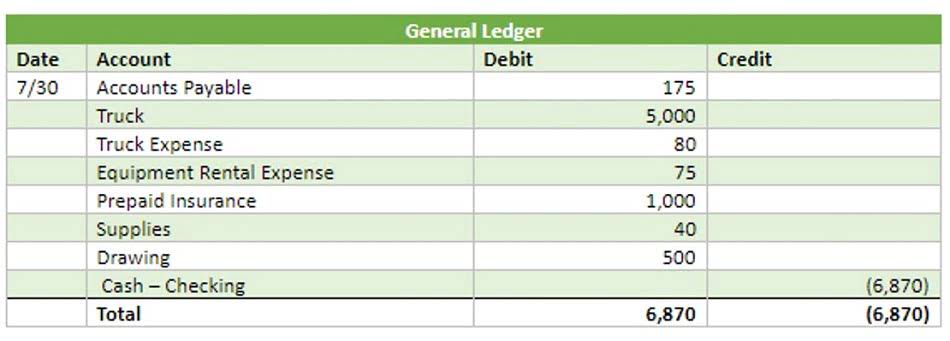
If you need the medicine for a legitimate medical reason, you may be granted a Therapeutic Use Exemption. A https://ecosoberhouse.com/article/why-alcoholism-is-considered-a-chronic-disease/ Therapeutic Use Exemption allows an athlete to use an otherwise banned substance. The NCAA Sport Science Institute is a leader in providing health and safety resources to college athletes, coaches, athletics administrators and campus partners. This is followed by a more specialized review of current thinking on the effects of administered testosterone on skeletal muscle, concluding with why this confers an unnatural and unfair physiological advantage on the abuser (Kadi, 2008).

Defining and defending drug-free bodybuilding: A current perspective from organisations and their key figures

They would not want any harm to be done to their career prospects. The pressure that comes with being a competitive athlete with a team, fans, and family behind them can be intense, and in many cases, can prompt the abuse of alcohol or drugs in sport. It may reach an extent where the athlete abuses the drug every day to help cope. In addition to these drugs, there are thousands of supplements on the market drug use in sports that can enhance performance. Some of these are banned by professional associations while others are allowed, and others still are being studied.
Why is it an issue now? A brief history of doping
- The family physician is a critical player in addressing the use of performance-enhancing drugs in recreational athletes of all ages.
- The result was the formation of the World Anti-Doping Agency (WADA), a body supported equally by sport and by governments.
- And I didn’t want to tell the truth, I really didn’t, I felt like I was 10 years too late to tell the truth.
- However, as we’ll discuss more below, players who come forward with a drug abuse problem receive league-paid treatment.
- This review examines the history of doping in athletes, the effects of different classes of substances used for doping, side effects of doping, the role of anti-doping organizations, and treatment of affected athletes.
Examples include human growth hormone (hGH), erythropoietin (EPO), insulin, human chorionic gonadotrophin (HCG), and adrenocorticotrophin (ACTH). Despite the presence of some growth factors, platelet-derived preparations were removed from the List as current studies on PRP do not demonstrate any potential for performance enhancement beyond a potential therapeutic effect. WADA has also taken the lead in the development of the athlete biological passport concept.61 WADA’s athlete biological passport operating guidelines took effect in 2009. The fundamental principle of the athlete biological passport is based on the monitoring of selected parameters over time that indirectly reveal the effect of doping, as opposed to the traditional direct detection of doping by analytical means.
Erythropoietin Pathology Tests Explained
- Players who come forward with their drug problems receive league-funded counseling from the Life Extension Institute, a 24-hour counseling center funded jointly by the NBA and the NBPA.
- In 1998, the entire Festina team were excluded from the Tour de France following the discovery of a team car containing large amounts of various performance-enhancing drugs.
- The use of drugs to enhance performance is considered unethical and is prohibited by most international sports organizations, including the International Olympic Committee.
- Former Olympic 1500m champion Lord Coe was named the new president of the IAAF on Wednesday and says he is determined to prove athletics’ world governing body is committed to ridding the sport of drug cheats.
You consent to receive SMS notifications and promotions from Addictionresource. General side effects include acne, inhibited growth in teenagers, hypertension, liver tumors, and psychiatric disorders. If an athlete is not competing with someone else, they are competing with who they were yesterday, striving to do better, to be better. And the pressure to improve is not merely internal; from coaches to parents to fans, it seems that everyone around athletes pushes them to do more and be more. Polycystic kidney disease (PKD) is a predominantly genetic condition causing cysts (fluid-filled blisters) to grow on the kidneys. These cysts gradually enlarge the kidneys as they grow, causing healthy kidney tissue to be compressed.
- For now, it would seem that the best approach is to discourage use and be there to help those who fall into the trap of using performance-enhancing drugs in sports.
- While the drive to perform at their very best pushes athletes to use drugs in sport, they face other factors that can cause different kinds of drug abuse.
- It can result in drug abuse in athletes, of medications like anxiolytics and antidepressants.
- The drive to be the best in sport dates to ancient times, as does the use of performance-enhancing substances.
- I called them committee meetings and just kind of think about what I was up to and the consequences if it all went bad, how ugly that was going to look.
This equates the more oxygen for the muscles, which comes with a performance boost. While the athlete’s own blood can be used if stored ahead of time, same-type blood from a third party is also an option. However, synthetic versions have become very popular within the world of sports. When it occurs naturally, it helps teens grow their bones during puberty and strengthen the skeletal structure overall; in medical settings, it can be used to help those who are not producing enough during puberty or who are fighting certain diseases, such as HIV.
- While PEDs may seem like the quick ticket to athletic glory, they are deadly.
- This was my opportunity, everybody else was doing it, so I kind of had to just join the club and not think so much about it.
- It contains 11 articles covering the mechanisms of action of the major groups of drugs used illicitly in sport.
- There is a research base demonstrating that many doping agents are in fact performance-enhancing.
- Modafinil was added to the list of prohibited substances on 3 August 2004, ten days before the start of the 2004 Summer Olympics.
- This is why injury prevention programs are fundamental especially at the youth level when focusing on proper technique to minimize the effects of soft and hard tissue trauma.
However, this is largely due to the availability of more options, many of which feel safer to athletes than traditional drugs. While the idea of injecting steroids may have seemed off-putting to all but the most driven athletes, taking a supplement that can be purchased at any health store seems less risky or even normal. As a result, up to 12 percent of teens, both engaged in sport and not, use substances to improve performance and appearance. While women use these substances as well, their use is more prevalent amongst men. Subsequently, the IOC made just minor amendments to the list that it published each year rather than changing the major categories.










